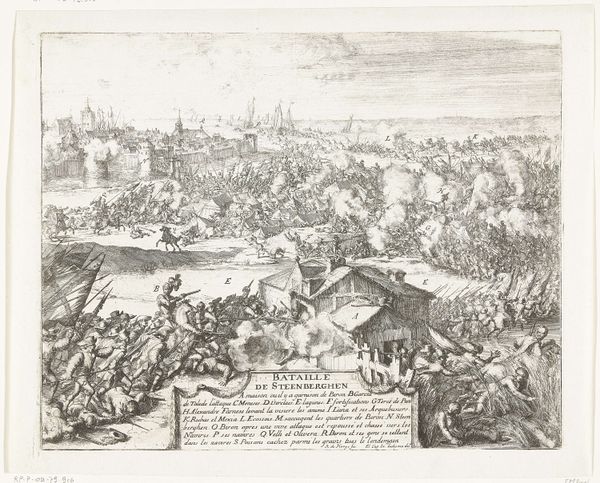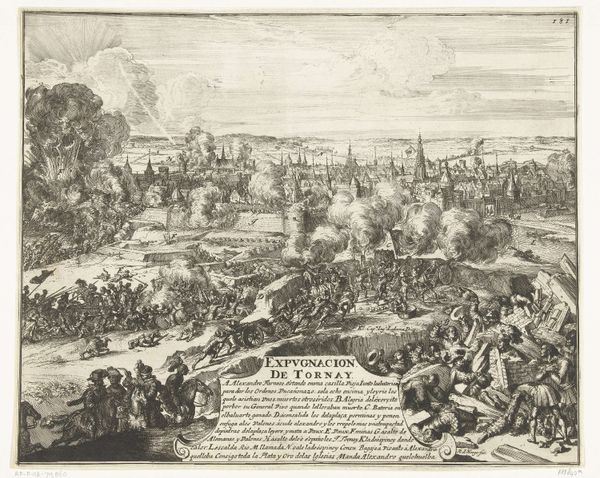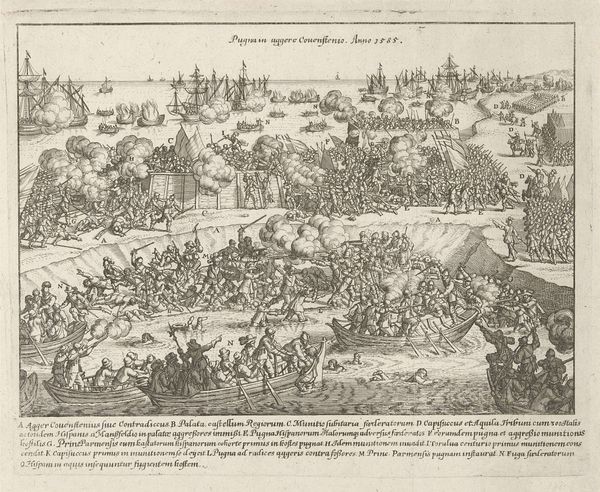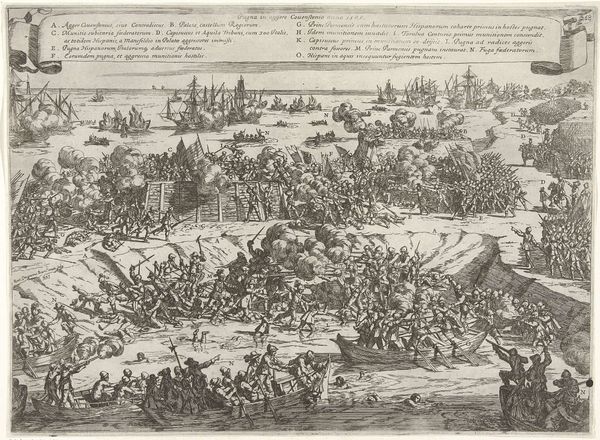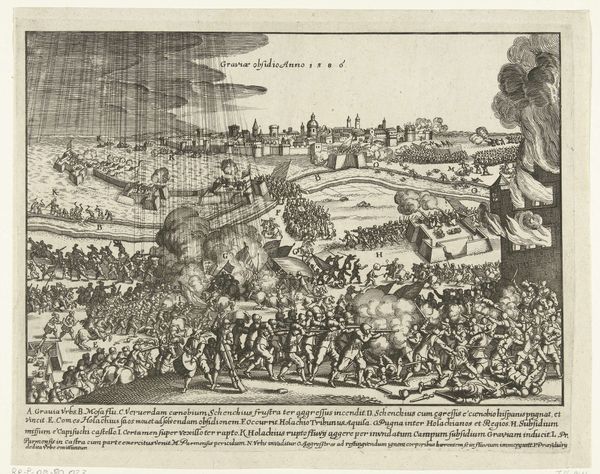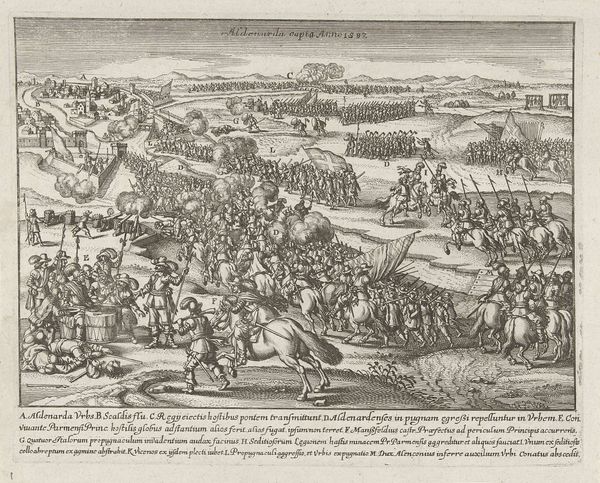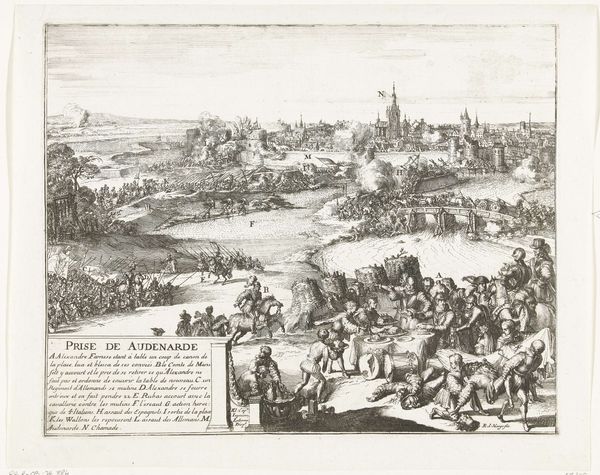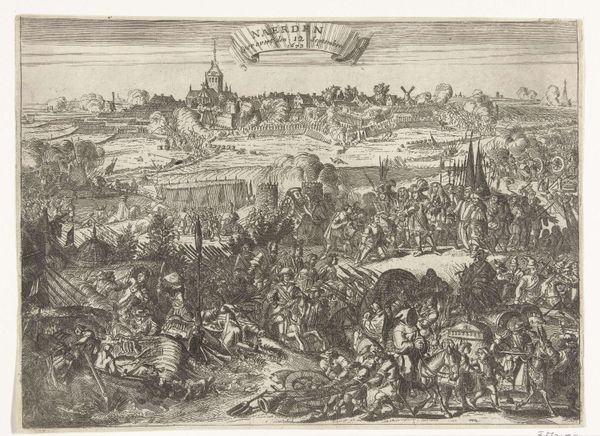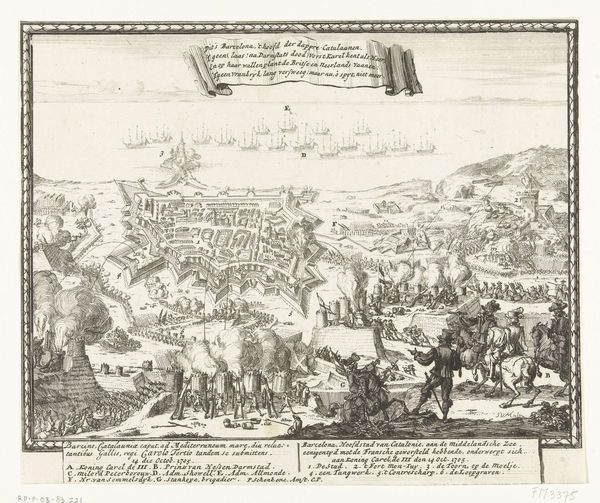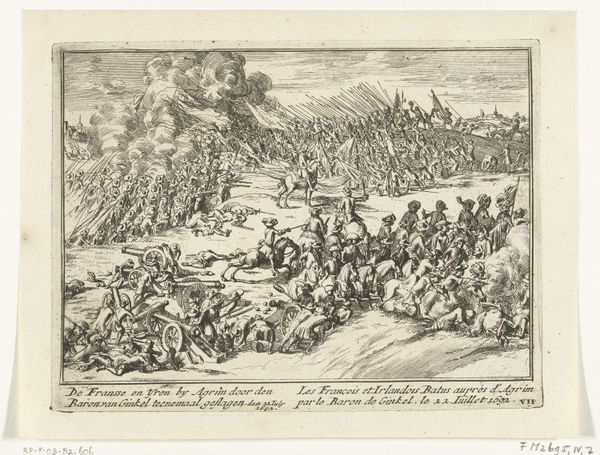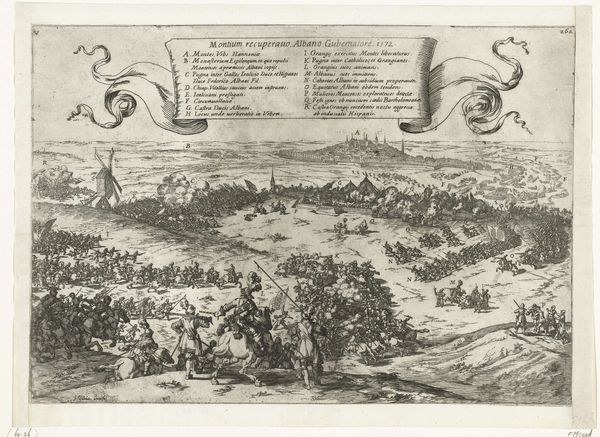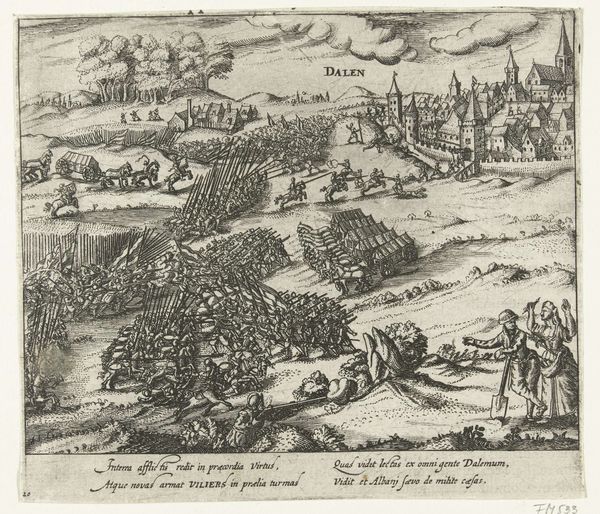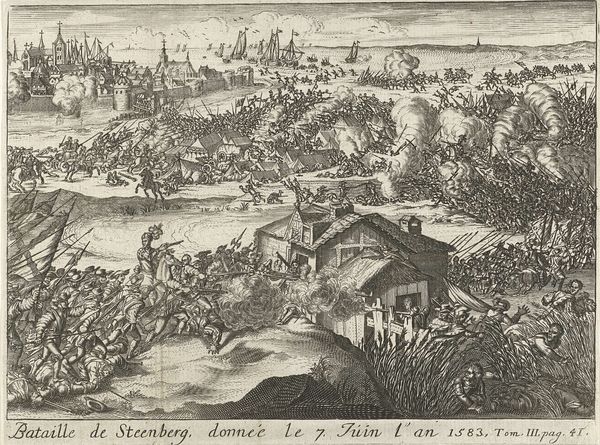
Gevechten bij Xanten en Rheinberg waarbij graaf Adolf van Nassau-Siegen sneuvelt, 1608 1613 - 1615
0:00
0:00
anonymous
Rijksmuseum
drawing, print, engraving
#
drawing
#
baroque
#
dutch-golden-age
# print
#
landscape
#
history-painting
#
engraving
Dimensions: height 130 mm, width 160 mm
Copyright: Rijks Museum: Open Domain
Editor: So, this is "Gevechten bij Xanten en Rheinberg waarbij graaf Adolf van Nassau-Siegen sneuvelt", made between 1613 and 1615 by an anonymous artist. It's a print, showing a battle scene. It feels incredibly detailed and chaotic. What’s your interpretation of it? Curator: Well, consider this print not just as an image, but as a form of early modern news dissemination. These prints circulated widely, shaping public perceptions of the Eighty Years' War. Notice how the landscape is rendered – more symbolic than realistic. What do you think that signifies? Editor: It feels like it emphasizes the scope of the conflict, perhaps downplaying the actual terrain? Like, making it more about the grand narrative than the nitty-gritty of the battlefield. Curator: Precisely. The print immortalizes a specific event – the death of Adolf van Nassau-Siegen. These prints were instrumental in constructing heroes and villains, influencing the public's understanding and support for the war effort. How do you think the choice to depict the scene from this elevated viewpoint contributes to that? Editor: Maybe to create a sense of overview and control? The viewer is positioned as an observer, almost detached from the carnage, able to digest the information more rationally? Curator: That detachment is key. It allows the viewer to consume the political message more readily. Consider also the inclusion of the burning village. These were not simply battles; they were events deeply affecting civilian populations. Prints like these solidified national identities and shaped enduring narratives about Dutch independence. Editor: It's interesting to think of it as a news report of its time, framing historical narratives. Thanks! Curator: Indeed. By examining such prints, we gain insight into the power dynamics and cultural forces at play in shaping public opinion during times of conflict.
Comments
No comments
Be the first to comment and join the conversation on the ultimate creative platform.

